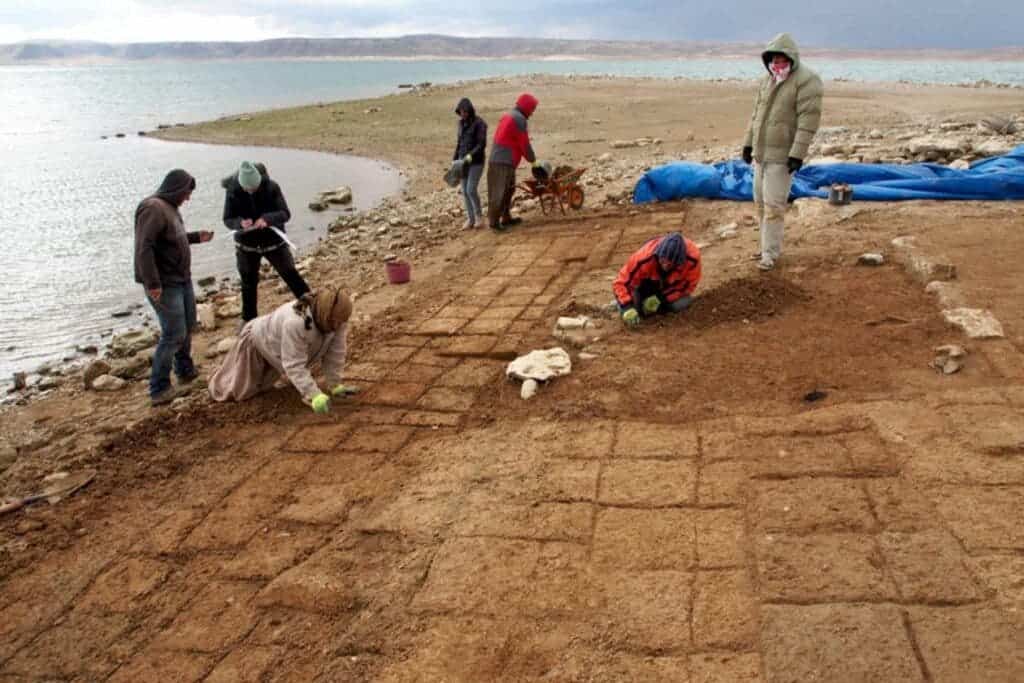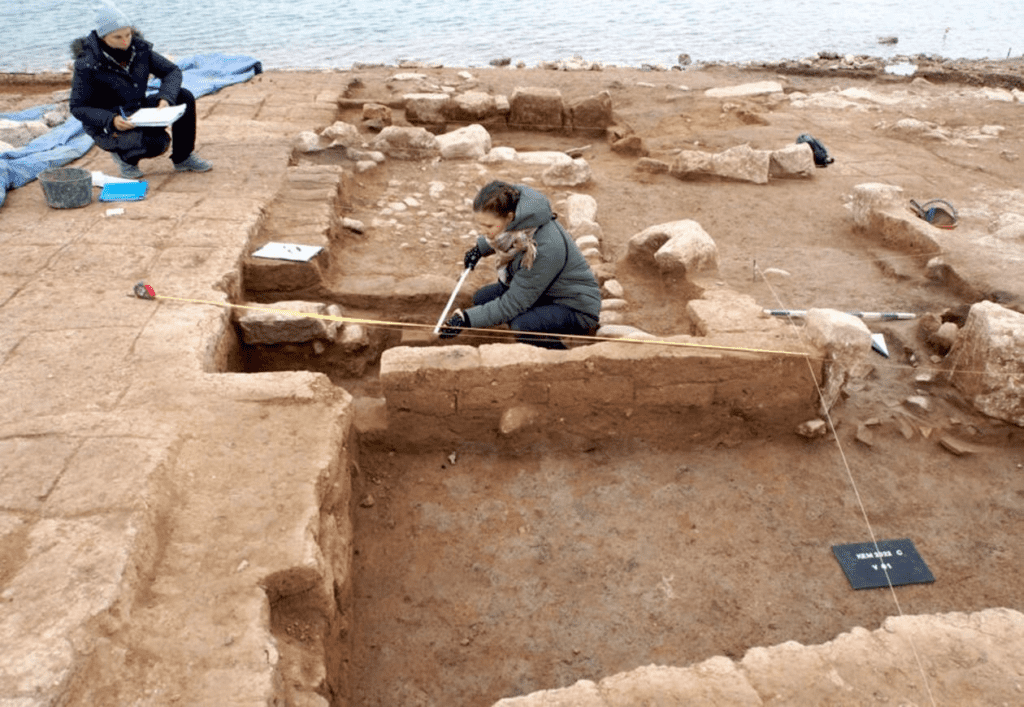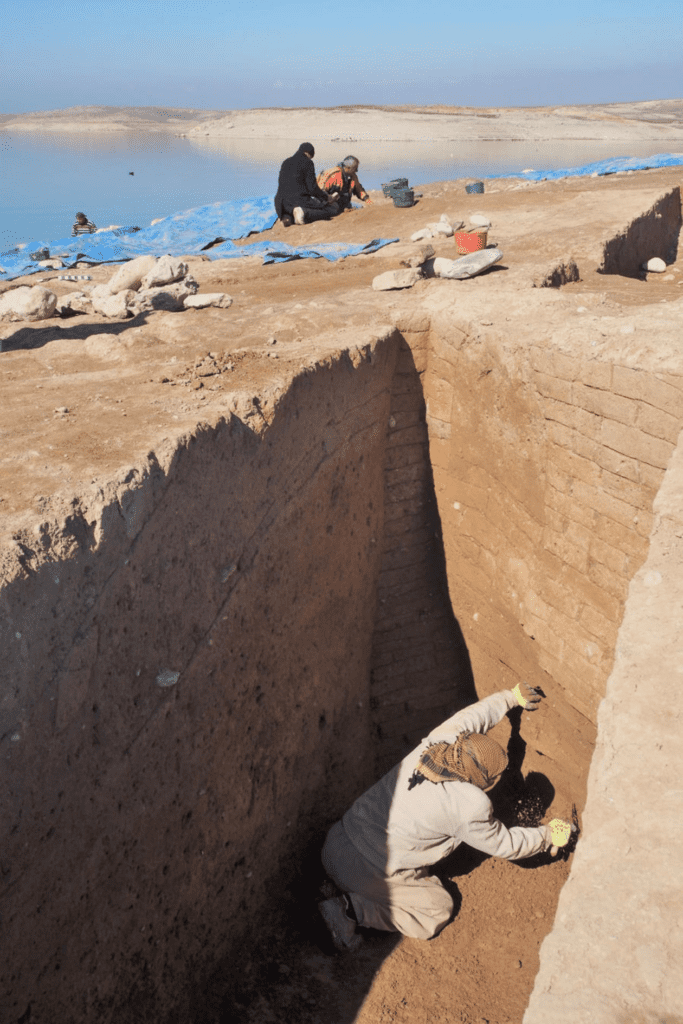When a severe drought in Iraq led to falling water levels at the Mosul Dam it brought a lot of trouble for the people depending on this water. But it also brought an opportunity for archaeologists — the falling water levels exposed ruins from an ancient city of the Mittani culture, a powerful kingdom that occupied parts of today’s Iraq some 3600 years ago.

A team of German and Kurdish archaeologists found themselves in an unusual situation. Normally, there’s little rush to excavate archaeological structures — after all, they’ve been in place for centuries and centuries. But this time, it was different.
As Iraq was suffering from drought, large amounts of water from the Mosul reservoir (the country’s largest water storage) were drawn to help with irrigation and this lowered the water level in the dam — exposing a Bronze Age city that was submerged when the reservoir was built, before archaeological investigations could be carried out at the site.
The water-covered city lies in the Kemune in the Kurdistan Region of Iraq. It was built by the Mittani kingdom. No native sources for the Mitanni history have been found so far, and most of what we know about them comes from what other cultures (like the Assyrians, HIttites, or Egyptians) wrote. This is yet another reason why it’s so important to use the rare opportunity to study the city.

The extensive settlement dates from about 1550-1350 BC, a time where the Mittani controlled large parts of Syria and Mesopotamia. The site features a palace and several large buildings, leading researchers to believe this could be the ancient Zakhiku (or Kemune-Zahiku), an important center for the Mittani.
The palace had already been discovered during a brief campaign in 2018, but several other large other buildings were previously unknown to archaeologists these include a monumental multi-story building, an industrial complex, as well as massive fortifications with walls and towers. An impressive storage site was also uncovered.
“The huge magazine building is of particular importance because enormous quantities of goods must have been stored in it, probably brought from all over the region,” says Ivana Puljiz from the University of Freiburg. Chairman of the Kurdistan Archaeology OrganizationHasan Qasim adds: “The excavation results show that the site was an important center in the Mittani Empire.”


Ironically, the city was so well preserved, even under water, because it was destroyed. Researchers were expecting many of the walls (sometimes, several meters high) to be very damaged, because they consisted of sun-dried mud bricks that were underwater for some 40 years. But when the city was destroyed in 1350 BC, some parts of the upper walls must have collapsed over the other parts, protecting them from the bulk of the water damage.
Researchers also uncovered five ceramic vessels that contained over a hundred cuneiform tablets, which were dated to the period shortly after the earthquake struck the city. Some of the clay tablets are letters and are still in excellent shape — researchers hope that these could shed more light on the end of the Mittani period, which also marked the beginning of Assyrian rule in the region.
“It is close to a miracle that cuneiform tablets made of unfired clay survived so many decades under water,” says Peter Pfälzner, also from Tübingen University.


After investigating the settlement as much as they could, the researchers covered the buildings with plastic sheets, which were then covered with gravel, to protect them as much as possible when the waters rise again. This extensive conservation project is intended to protect the walls and other finds that still lie hidden in the ruins.
Now, as the drought has ended, the city is once again completely submerged.

Iraq is one of the most vulnerable countries to climate change. The country is exposed not just to droughts, but also to floods, dust storms, and other severe events. As the country struggles with rising temperatures and changes in rainfall, agriculture is affected, and as a result, food availability and household incomes also suffer. Small-scale farmers usually suffer the most, and women and girls are also disproportionately affected, due to pre-existing gender norms and inequalities.



